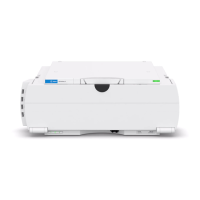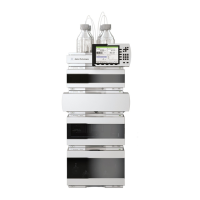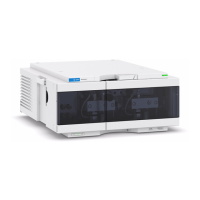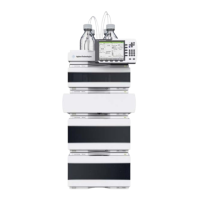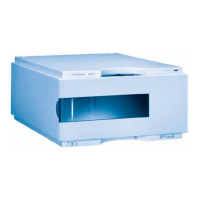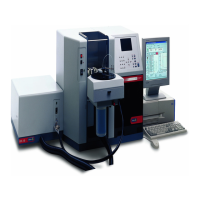46 Purification Solution - Developer's Guide
6
Calibration Procedures
Reviewing analytical results
1 Create default methods, see “Preparing Default Purification Methods” on
page 9
“Critical Method Parameters” on page 24 summarizes parameters of the
purification LC system that are critical for correct function of the LC
system and Purification software.
Set up default methods for the purification instrument:
• General
• Analytical (only for combined analytical and preparative instrument)
• Preparative
• Agilent Active Splitter
2 Determine instrument tubing volumes (Mixing point to UV and Column to
UV), see Characterizing the tubing volumes(“Characterizing the delay
volumes: Mixing point to UV detector and Column to UV detector” on
page 48)
Characterization of tubing volumes between the mixing point-to-UV and the
column-to-UV that include volumes of tubing and some modules. For the
standard analytical system, it is recommended to calculate the Mixing
point-to-UV detector tubing volume if the void volumes of the modules are
available. For the purification system, it is recommended to perform both
measurement and calculation of the instrument Mixing point-to-UV
detector tubing volume. Comparison of these two values can serve as a test
for the correct tubing set-up, and that it is free of air bubbles; if the
deviation is significant (more than about 10 %), check the tubing connection
and/or flush the tubing with a high flow rate to remove air bubbles
(typically in the mixer).
If you are using custom tubing systems:
• Calculate the Column-to-UV detector tubing volume for:
• Analytical flow path (combined or standard analytical system)
• Preparative flow path
• Calculate Mixing point-to-UV detector tubing volume for:
• Analytical flow path (combined or standard analytical system)
• Preparative flow path
• Measure the Mixing point-to-UV detector tubing volume for:
• Preparative flow path (bypass the splitter, if you are using the
combined system)
